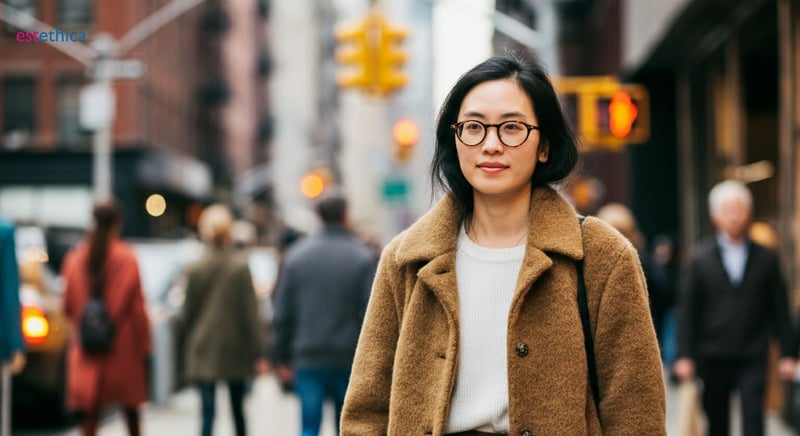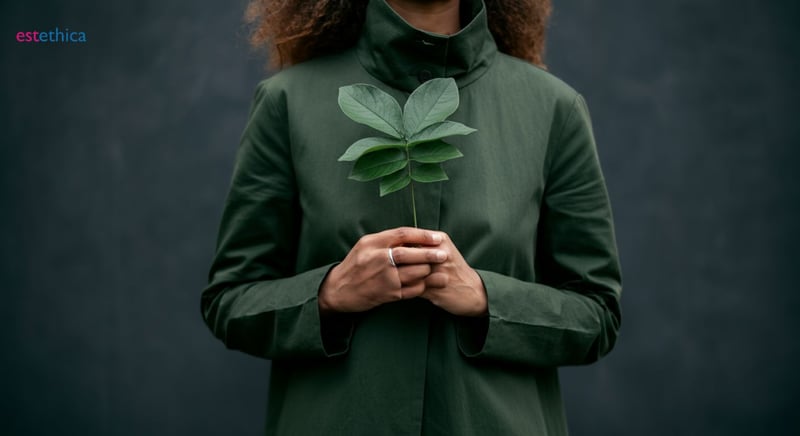estethica Unveiled: Embrace Sustainable Fashion
Sustainable fashion is the future of the industry, providing stylish, ethical, and eco-conscious choices.
Sustainable fashion is more than just a trend; it's a movement towards a more conscious and responsible approach to the way we consume and produce clothing. As we become increasingly aware of the environmental and social impacts of fashion, many are turning to eco-friendly and ethical alternatives. This guide aims to shed light on sustainable fashion, helping you make informed choices and embrace a wardrobe that's both stylish and sustainable.
Understanding Sustainable Fashion: A Comprehensive Guide
Exploring the Aesthetics of Sustainable Fashion
Sustainable fashion is not just about environmental impact; it also embraces aesthetics, offering a unique blend of style and sustainability. Elite-aesthetics in sustainable fashion focus on creating visually appealing designs using eco-friendly materials. For instance, designers are now using organic cotton and recycled polyester to craft chic, sustainable apparel. These materials not only reduce waste but also enhance the aesthetic appeal of clothing.
Key Features of Eco-Friendly Clothing
- Use of organic materials like bamboo and hemp, which are both sustainable and stylish.
- Incorporation of natural dyes that offer vibrant colors without harmful chemicals.
- Designs that prioritize longevity, ensuring garments remain fashionable over time.
By focusing on these features, sustainable fashion brands are redefining what it means to be stylish while being environmentally conscious.
Steps to Choose Sustainable Fashion
- Research brands that prioritize ethical production and fair labor practices.
- Look for certifications like GOTS (Global Organic Textile Standard) to ensure material authenticity.
- Consider the lifecycle of the clothing, opting for items that can be recycled or upcycled.
By following these steps, consumers can make informed decisions that support both aesthetics and sustainability. For more insights into sustainable practices, explore the Mummification Process: Insights from estethica.

Choosing Eco-Friendly Clothing: Key Considerations
Understanding the Impact of Material Choices
When selecting eco-friendly clothing, the choice of materials plays a crucial role. Opt for garments made from organic cotton, which uses 91% less water than conventional cotton. Recycled polyester is another excellent option, reducing carbon emissions by 75% compared to virgin polyester. These materials not only support sustainable fashion but also enhance the aesthetics of the clothing, aligning with elite-aesthetics principles.
Evaluating Ethical Fashion Brands
- Research brands that emphasize transparency in their supply chains.
- Look for companies that support fair labor practices and local artisans.
- Choose brands with certifications like Fair Trade, ensuring ethical production.
By supporting ethical fashion brands, consumers contribute to a more sustainable and equitable fashion industry.
Steps to Identify Quality Eco-Friendly Clothing
- Inspect the garment's construction for durability and longevity.
- Check for certifications like GOTS to verify organic material use.
- Consider the brand's commitment to sustainability and aesthetics.
These steps help ensure that your clothing choices are both sustainable and stylish, reflecting the values of aesthetics training and elite-aesthetics.

Spotlight on Ethical Fashion Brands: What to Look For
Innovative Practices in Ethical Fashion
Ethical fashion brands are redefining the industry by adopting innovative practices that prioritize sustainability and aesthetics. For instance, some brands are using upcycled materials to create unique designs, reducing waste while enhancing the visual appeal of their collections. Others are integrating technology, such as digital printing, to minimize water usage and chemical waste, aligning with the principles of elite-aesthetics.
Key Characteristics of Leading Ethical Fashion Brands
- Commitment to transparency, ensuring consumers know the origins of their clothing.
- Use of sustainable materials like Tencel and organic linen, which are both eco-friendly and stylish.
- Support for local artisans, promoting fair labor practices and community development.
These characteristics not only support sustainable fashion but also contribute to a more equitable industry, reflecting the values of aesthetics training and elite-aesthetics.
Steps to Identify Authentic Ethical Fashion Brands
- Research the brand's supply chain transparency and ethical commitments.
- Look for certifications like Fair Trade and B Corp, which validate ethical practices.
- Evaluate the brand's use of innovative materials and design techniques.
By following these steps, consumers can confidently support ethical fashion brands that align with their values and aesthetics, contributing to a more sustainable future.

The Future of Fashion: Embracing Upcycled and Zero Waste Trends
Innovative Approaches to Sustainable Fashion
Upcycling and zero waste are revolutionizing sustainable fashion by transforming how we view and use materials. Upcycled fashion creatively repurposes existing textiles, turning discarded items into unique, stylish pieces. For example, a designer might transform old denim jeans into a chic jacket, showcasing elite-aesthetics while reducing waste. Zero waste design, on the other hand, focuses on pattern-making techniques that eliminate fabric waste during production, aligning with aesthetics training principles.
Benefits of Upcycled and Zero Waste Fashion
- Reduces environmental impact by minimizing textile waste and conserving resources.
- Offers unique fashion choices that stand out for their creativity and innovation.
- Supports a circular fashion economy, promoting sustainability and ethical practices.
These benefits highlight the potential of upcycled and zero waste fashion to redefine industry standards, aligning with the values of jessica rose aesthetics.
Steps to Incorporate Upcycled and Zero Waste Fashion
- Identify brands that specialize in upcycled and zero waste designs.
- Explore local markets and boutiques for unique, sustainable pieces.
- Consider DIY projects to transform your own wardrobe sustainably.
By embracing these steps, consumers can actively participate in the sustainable fashion movement, supporting both aesthetics and environmental responsibility.
Innovative Approaches to Sustainable Fashion
The Future of Fashion: Embracing Upcycled and Zero Waste Trends
Frequently Asked Questions
What is sustainable fashion and why is it important?
How can I choose eco-friendly clothing?
What are the best materials for sustainable apparel?
How do I find ethical fashion brands?
What are the benefits of upcycled and zero waste fashion?
Discover the Art of Healthy Beauty with estethica! Call us today for a free consultation and take the first step towards a more confident you.
📞 Call Now for Your Free Consultation